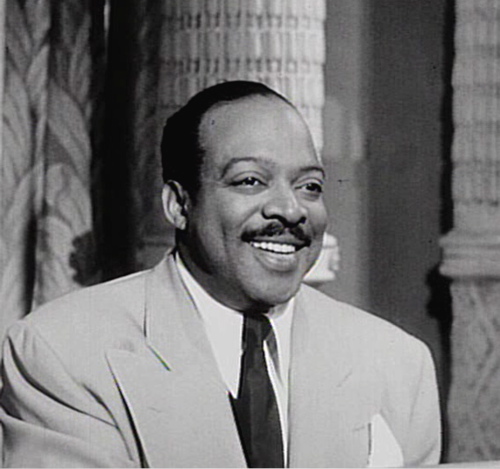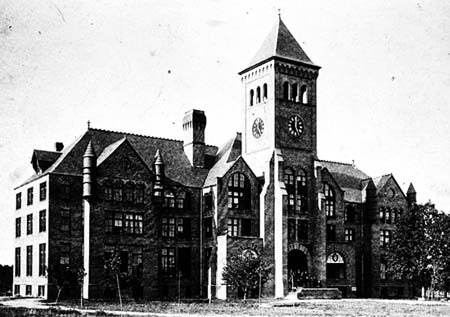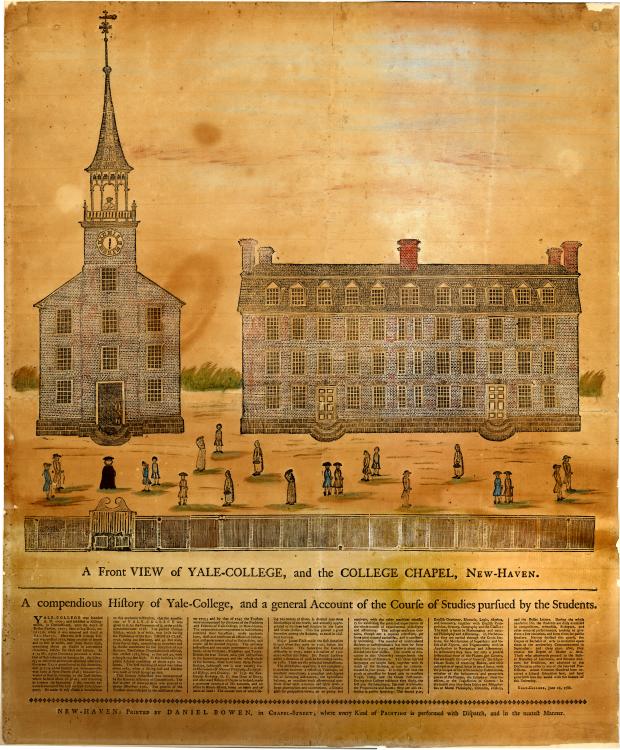|
Willie Ruff
Willie Henry Ruff Jr. (September 1, 1931 – December 24, 2023) was an American jazz musician, specializing in the French horn and double bass, and a music scholar and educator, primarily as a Yale professor from 1971 to 2017. Personal life Willie Henry Ruff Jr. was born in Sheffield, Alabama on September 1, 1931. He attended the Yale School of Music as an undergraduate (Bachelor of Music, 1953) and graduate student (Master of Music, 1954). Ruff died in Killen, Alabama on December 24, 2023, at the age of 92. Professional career Performing Ruff played in the Mitchell-Ruff Duo with pianist Dwike Mitchell for over 50 years. Mitchell and Ruff first met in 1947, when they were teenaged servicemen stationed at the former Lockbourne Air Force Base in Ohio; Mitchell recruited Ruff to play bass with his unit band for an Air Force radio program. Mitchell and Ruff later played in Lionel Hampton's band but left in 1955 to form their own group. Together as the Mitchell-Ruff Duo, they pla ... [...More Info...] [...Related Items...] OR: [Wikipedia] [Google] [Baidu] |
Sheffield, Alabama
Sheffield is a city in Colbert County, Alabama, United States, and is included in the Florence-Muscle Shoals Metropolitan Area. The population was 9,403 at the 2020 census. and was estimated to be 9,307 in 2023. Sheffield is the birthplace of "country-soul pioneer" and songwriter Arthur Alexander, French horn player Willie Ruff, notable attorney, actor, former senator and presidential contender Fred Thompson, Watergate committee U.S. Senator Howell Heflin and U.S. Senator Mitch McConnell, whose father was working in nearby Athens when he was born. It sometimes is referred to as "the City of Senators" due to the births of Heflin, McConnell and Thompson within its borders. Col. Harland Sanders worked for Southern Railway in Sheffield in 1907. It is also home to the Muscle Shoals Sound Studio where many popular 20th century musicians recorded their work, including Alexander and Ruff. It is the site of historic Helen Keller Hospital, formerly known as Colbert County Hospital, ... [...More Info...] [...Related Items...] OR: [Wikipedia] [Google] [Baidu] |
Count Basie
William James "Count" Basie (; August 21, 1904 – April 26, 1984) was an American jazz pianist, organist, bandleader, and composer. In 1935, he formed the Count Basie Orchestra, and in 1936 took them to Chicago for a long engagement and their first recording. He led the group for almost 50 years, creating innovations like the use of two "split" tenor saxophones, emphasizing the rhythm section, riffing with a big band, using arrangers to broaden their sound, his minimalist piano style, and others. Many musicians came to prominence under his direction, including the tenor saxophonists Lester Young and Herschel Evans, the guitarist Freddie Green, trumpeters Buck Clayton and Harry "Sweets" Edison, plunger trombonist Al Grey, and singers Jimmy Rushing, Helen Humes, Dennis Rowland, Thelma Carpenter, and Joe Williams (jazz singer), Joe Williams. As a composer, Basie is known for writing such jazz standards as "Blue and Sentimental", "Jumpin' at the Woodside" and "One O'Clock Jump" ... [...More Info...] [...Related Items...] OR: [Wikipedia] [Google] [Baidu] |
A Cappella
Music performed a cappella ( , , ; ), less commonly spelled acapella in English, is music performed by a singer or a singing group without instrumental accompaniment. The term ''a cappella'' was originally intended to differentiate between Renaissance music, Renaissance polyphony and Baroque (music), Baroque concertato musical styles. In the 19th century, a renewed interest in Renaissance polyphony, coupled with an ignorance of the fact that vocal parts were often doubled by instrumentalists, led to the term coming to mean unaccompanied vocal music. The term is also used, rarely, as a synonym for ''alla breve''. Early history Research suggests that singing and vocables may have been what early humans used to communicate before the invention of language. The earliest piece of sheet music is thought to have originated from times as early as 2000 BC, while the earliest that has survived in its entirety is from the first century AD: a piece from Greece called the Seikilos epi ... [...More Info...] [...Related Items...] OR: [Wikipedia] [Google] [Baidu] |
Traditional Black Gospel
Traditional black gospel is music that is written to express either personal or a communal belief regarding African American Christian life, as well as (in terms of the varying music styles) to give a Christian alternative to mainstream secular music. It is a form of Christian music and a subgenre of black gospel music. Like other forms of music, the creation, performance, significance, and even the definition of gospel music varies according to culture and social context. It is composed and performed for many purposes, ranging from aesthetic pleasure, religious or ceremonial purposes, or as an entertainment product for the marketplace. However, a common theme as with most Christian music is praise, worship or thanks to God and Christ.New World Encyclopedia, ''Gospel Music'', Dec 23 2013 Traditional gospel music was popular in the mid-20th century. It is the primary source for urban contemporary gospel and Christian hip hop, which rose in popularity during the late 20th centur ... [...More Info...] [...Related Items...] OR: [Wikipedia] [Google] [Baidu] |
Sanford Medal
Samuel Simons Sanford (15 March 18496 January 1910) was an American pianist and educator. Early life He was born in Bridgeport, Connecticut. Education He studied piano in New York with William Mason (son of Lowell Mason and student of Franz Liszt and Ignaz Moscheles). He went to Paris and studied with Alfred Jaëll, Louis Plaidy (teacher of Hans von Bülow and many others), Théodore Ritter (another student of Liszt), and Édouard Batiste. In 1869, he became acquainted with Anton Rubinstein, and later studied with him. Career He travelled with Rubinstein during his first American tour in 1872–73. Ignacy Jan Paderewski changed his execution of octave playing after hearing Sanford play, and once described Sanford as the most musically gifted person he ever knew. Sanford brought Sir Edward Elgar's music to American attention through the brothers Walter and Frank Damrosch and Theodore Thomas. He was instrumental in having Elgar awarded an honorary doctorate in music from Y ... [...More Info...] [...Related Items...] OR: [Wikipedia] [Google] [Baidu] |
Alabama Jazz Hall Of Fame
The Alabama Jazz Hall of Fame (AJHF) is an organization and museum in Birmingham, Alabama, United States. It was founded in 1978, and opened as museum on September 18, 1993, with a mission "to foster, encourage, educate, and cultivate a general appreciation of the medium of jazz music as a legitimate, original and distinctive art form indigenous to America. Its mission is also to preserve a continued and sustained program of illuminating the contribution of the State of Alabama through its citizens, environment, demographics and lore, and perpetuating the heritage of jazz music." The AJHoF Museum The museum is located in Birmingham's historic Carver Theatre (Birmingham, Alabama), Carver Theatre, which is part of the Birmingham Civil Rights District, along with the Birmingham Civil Rights Institute, 16th Street Baptist Church and Kelly Ingram Park. The museum contains more than of exhibits. The Jazz Hall of Fame also sponsors jazz performances around the city and brings jazz t ... [...More Info...] [...Related Items...] OR: [Wikipedia] [Google] [Baidu] |
Duke Ambassadors
The Duke Ambassadors was a student-run jazz big band, active at Duke University from 1934 to 1964. Student-run big bands began again in 1969 as the Duke Stage Band and from 1971 to 1974 as the Duke Jazz Ensemble. From 1974 to the present, professional musician-educators have led the Duke Jazz Ensemble. History of musical performance at Duke University Music instruction and performance played a relatively minor role in the early years of Duke University (known as Trinity College until 1924). While there was a Glee Club at Trinity in the late 19th century, music was not a part of the formal curriculum. As Trinity College thrived in the early 20th century, so did student music groups. By 1916 Trinity supported a "Music Council" that included three faculty members along with the student leaders of the three campus musical groups: the Glee Club, the University Band, and the Symphony Orchestra. In 1926, the recently renamed Duke University hired George "Jelly" Leftwich Jr. as the univer ... [...More Info...] [...Related Items...] OR: [Wikipedia] [Google] [Baidu] |
Duke University
Duke University is a Private university, private research university in Durham, North Carolina, United States. Founded by Methodists and Quakers in the present-day city of Trinity, North Carolina, Trinity in 1838, the school moved to Durham in 1892. In 1924, tobacco and electric power industrialist James Buchanan Duke established the Duke Endowment and the institution changed its name to honor his deceased father, Washington Duke. The campus spans over on three contiguous sub-campuses in Durham, and a Duke University Marine Laboratory, marine lab in Beaufort, North Carolina, Beaufort. The Duke University West Campus, West Campus—designed largely by architect Julian Abele—incorporates Collegiate Gothic in North America, Gothic architecture with the Duke Chapel at the campus' center and highest point of elevation, is adjacent to the Duke University Health System, Medical Center. Duke University East Campus, East Campus, away, home to all first-years, contains Georgian archit ... [...More Info...] [...Related Items...] OR: [Wikipedia] [Google] [Baidu] |
Yale University
Yale University is a Private university, private Ivy League research university in New Haven, Connecticut, United States. Founded in 1701, Yale is the List of Colonial Colleges, third-oldest institution of higher education in the United States, and one of the nine colonial colleges chartered before the American Revolution. Yale was established as the Collegiate School in 1701 by Congregationalism in the United States, Congregationalist clergy of the Connecticut Colony. Originally restricted to instructing ministers in theology and sacred languages, the school's curriculum expanded, incorporating humanities and sciences by the time of the American Revolution. In the 19th century, the college expanded into graduate and professional instruction, awarding the first Doctor of Philosophy, PhD in the United States in 1861 and organizing as a university in 1887. Yale's faculty and student populations grew rapidly after 1890 due to the expansion of the physical campus and its scientif ... [...More Info...] [...Related Items...] OR: [Wikipedia] [Google] [Baidu] |
Duke Ellington Fellowship Program
The Duke Ellington Fellowship Program is a community-based organization which sponsors artists mentoring and performing with Yale University students and young musicians from the New Haven New Haven is a city of the U.S. state of Connecticut. It is located on New Haven Harbor on the northern shore of Long Island Sound. With a population of 135,081 as determined by the 2020 U.S. census, New Haven is the third largest city in Co ... public school system. Community organizations Duke Ellington Education in Connecticut {{Sociology-stub ... [...More Info...] [...Related Items...] OR: [Wikipedia] [Google] [Baidu] |
Ethnomusicology
Ethnomusicology is the multidisciplinary study of music in its cultural context. The discipline investigates social, cognitive, biological, comparative, and other dimensions. Ethnomusicologists study music as a reflection of culture and investigate the act of music-making through various immersive, observational, and analytical approaches. This discipline emerged from comparative musicology, initially focusing on non-Western music, but later expanded to embrace the study of all different music. The practice of ethnomusicology relies on direct engagement and performance, as well as academic work. Fieldwork takes place among those who make the music, engaging local languages and culture as well as music. Ethnomusicologists can become participant observers, learning to perform the music they are studying. Fieldworkers also collect recordings and contextual data. Definition Ethnomusicology combines perspectives from folklore, psychology, cultural anthropology, linguistics, compara ... [...More Info...] [...Related Items...] OR: [Wikipedia] [Google] [Baidu] |
Songs Of Leonard Cohen
''Songs of Leonard Cohen'' is the debut studio album by Canadian singer-songwriter Leonard Cohen, released on December 27, 1967, on Columbia Records. More successful in Europe than in North America, ''Songs of Leonard Cohen'' foreshadowed the kind of chart success Cohen would go on to achieve. It peaked at number 13 on the UK Albums Chart, spending nearly a year and a half on it. In the US, it reached number 83 on the ''Billboard'' 200. Background Cohen had received positive attention from critics as a poet and novelist but had maintained a keen interest in music, having played guitar in a country and western band called the Buckskin Boys as a teenager. In 1966, Cohen set out for Nashville, where he hoped to become a country songwriter, but instead got caught up in New York City's folk scene. In November 1966, Judy Collins recorded and included Cohen's song " Suzanne" for her album ''In My Life'' and Cohen soon came to the attention of record producer John Hammond. Although Ham ... [...More Info...] [...Related Items...] OR: [Wikipedia] [Google] [Baidu] |





